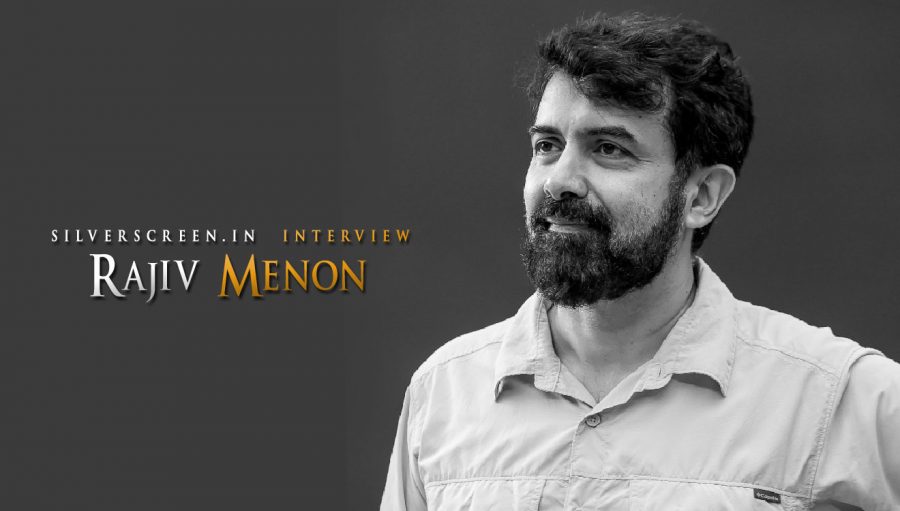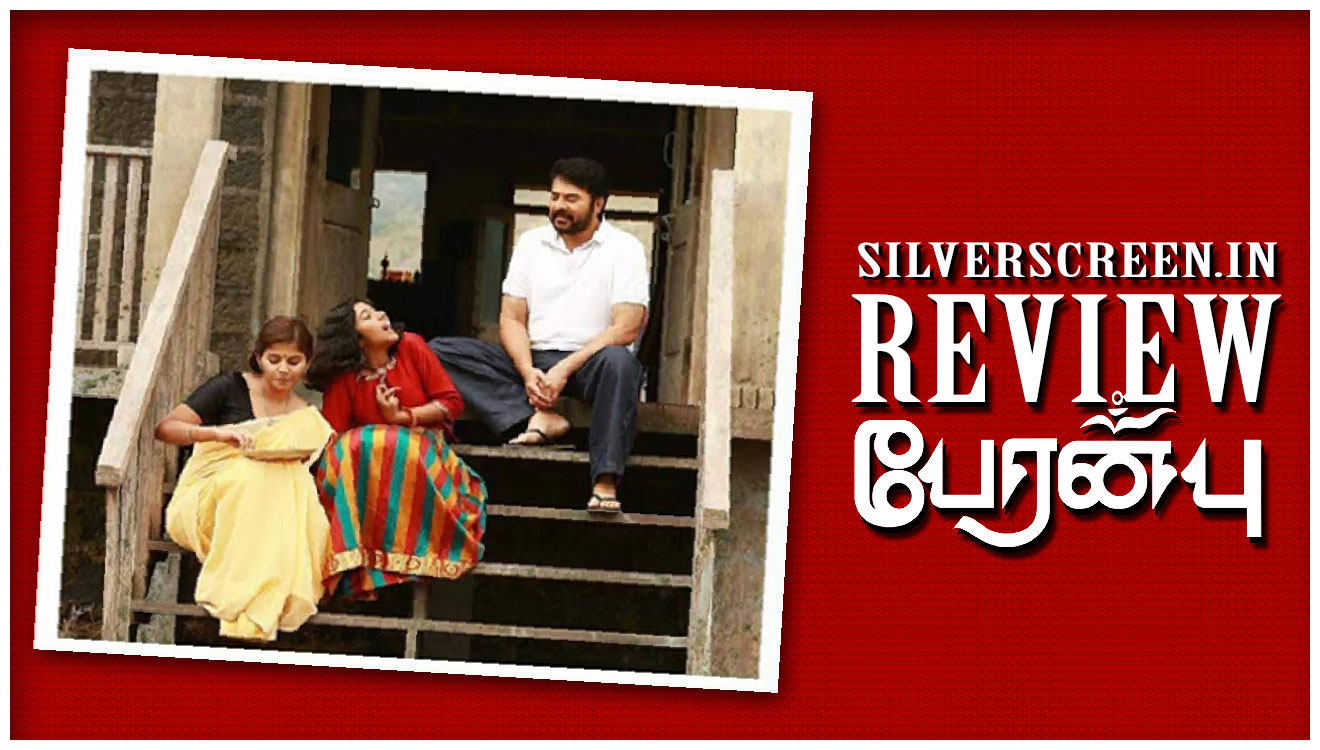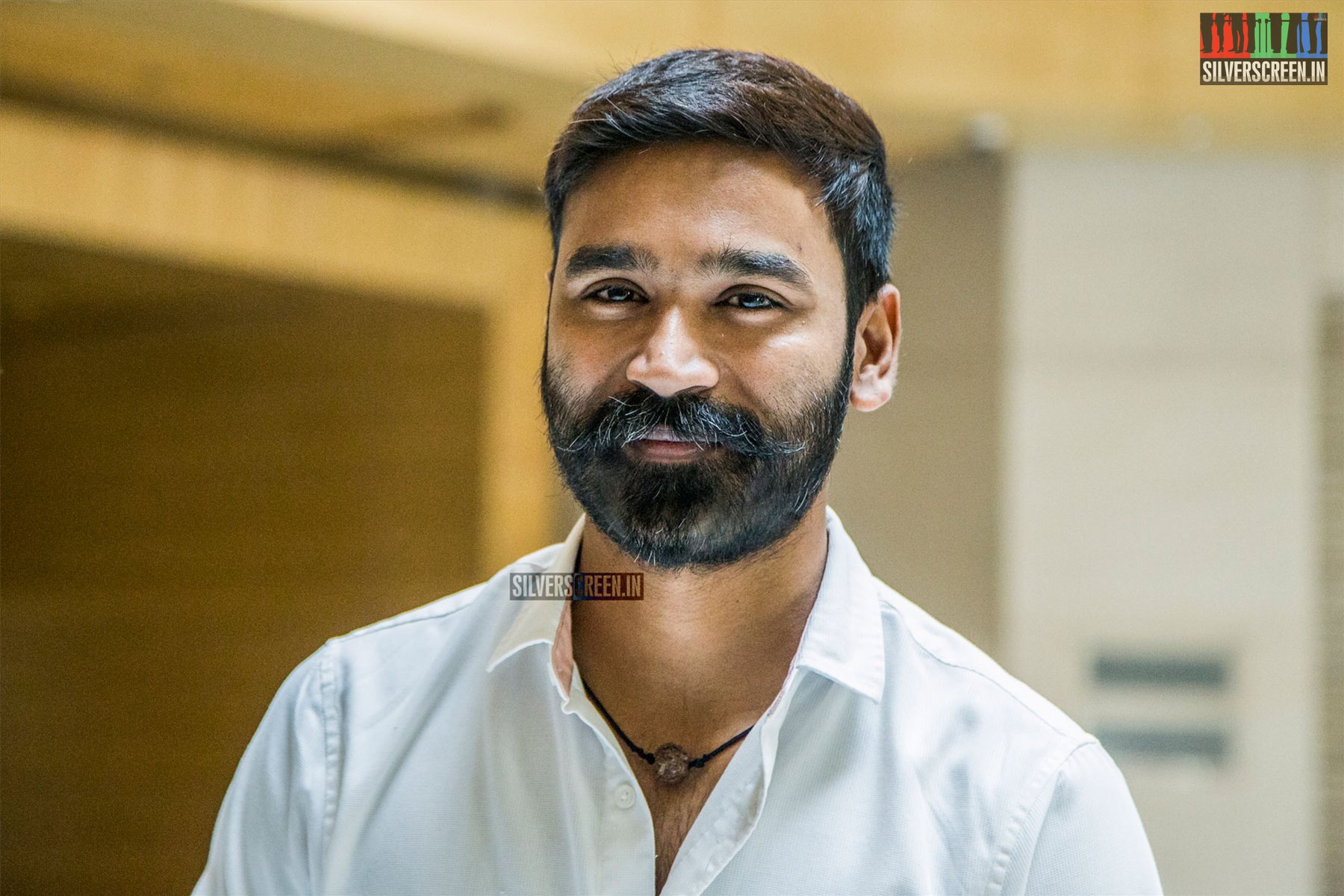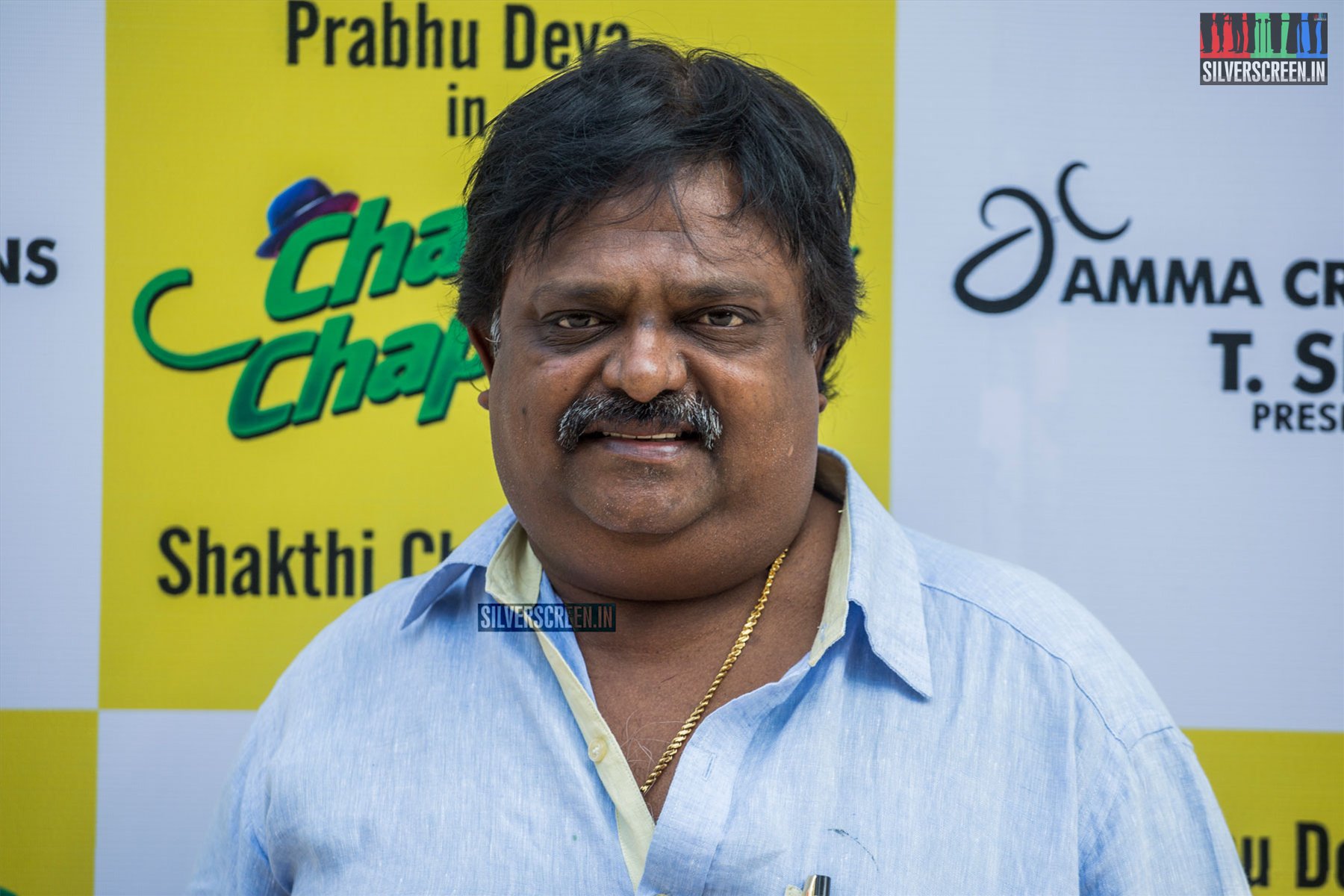Rajiv Menon’s Sarvam Thaala Mayam, which hit screens on February 1, brought to mainstream cinema something that has so far been contained only to a few voices on the Internet: the social divide that separates those who want to enter the world of Carnatic music and those who eventually do. The film though, was neither inspired by anger, nor made to pass easy judgement, says director Rajiv Menon in conversation with Silverscreen
In the fortnight since the release of Sarvam Thaala Mayam, there’s been some dialogue, and a lot more fiery debate about the film that seeks to throw the spotlight on the situations that unfold when a musical instrument maker wants to learn the instrument; what happens when a boy who is usually not allowed entry into a musician’s house wants to enter the teaching room inside? Director Rajiv Menon, who is back making movies after an 18-year-gap, has been caught in a peculiar situation — the high praise aside, he has also been accused of both pandering to the Brahminical perspective and the Dalit voice, thankfully, by different sets of people. But, what does the creator have to say about why he structured his film thus? Here are edited excerpts from an hour-long interview.
Some reviews drew parallels between Sarvam Thaala Mayam and Pariyerum Perumal, and felt your film was not hard-hitting enough.
I think you can either break things with a hammer, or chisel away in an informed manner. I can take up the former if I’m doing an expose or if I am into political journalism, but here, I’m taking an instrument that is a pakkavadhyam (accompaniment) and trying to get people interested in it. When I do that well, the audience is in the same state as Peter. I need to spend some time getting people into the film; and the film has to be breezy and light-hearted for them. Yes, there’s another angle of how a Brahmin plays the instrument and how cows are slaughtered to make the instrument, but that is not my story. When we know, we tell well. In this case, I don’t know, but I am in a place where I can see certain things. I am not in a position of anger. I am in a position of thinking about these things and letting the audience conclude what they feel. I don’t put forth ready-made answers, only points of discussion. I am dealing with a film about an art that does not have top-of-the-mind recall among a young audience. If I get into sloganeering, people cannot appreciate the art. Now, young people are whistling when casteist Mani is thrown out of Vembu Iyer’s house. That is heartwarming; it shows they have invested in what’s happening. I think I’m reducing differences, not creating hate.
Does the frequent mention of the 18-year-gap rankle?
Not at all. In my head, I only wonder if anyone remembers me at all after all these years. I’ve changed so much, so has cinema. People remember visuals, they remember Sowmya and Meenakshi. A 21-year-old theatre-goer today would have been two or three years old when Kandukondein Kandukondein released. The bulk of today’s audience has only heard of me, not really seen my work (laughs). That said, I believe everyone is constantly evolving, like Vembu Iyer. Water flows; like that, the audience is also dynamic. The way people perceive me – a filmmaker – would be absolutely relevant if I continuously make films that connect with the audience, and find out if I fit in with the expectation or not. But, I don’t take myself that seriously.

You signed GV Prakash before Naachiyar and after a spate of youthful subjects. When did you realise that the boy who spoke of virgin pasanga would charm his way into Vembu Iyer’s heart?
Oh, he went through a camera test. During the test, you’re watching carefully to see if the guy comes along as cocky or dull, you see if he’s able to receive instructions and remember what you told him earlier, is he responsive… I wanted a musician, someone eager and interested in the subject but also someone who could act. I had only seen GV’s Darling, and the roles he played earlier were not so significant for me. I was not fully abreast of his star persona. I did something similar when signing Prabhudeva for Minsara Kanavu. All I wonder is whether the actor is working for me, if he/she is responding and if I can push him/her in a certain direction, get a performance that is vulnerable. Will I cry if he cries? Will I get angry if he gets angry? Those are the things I look at. Also, I was particular Peter must not be very muscular. I did now want him to be very well endowed; because if he already has people falling for him, he won’t be beating drums on the road for a hero he admires. It’s normal fan psychology that people like Peter seek refuge in a group. I’ve met a lot of them while shooting ads with the stars, and all they need is a photograph with a star. They are naïve, have positive thoughts. I like to see the good and the bad in everything. My characters need not be in black and white.
What do you have to say to the accusation that while you raised certain issues (Vembu not playing for female singers), you did not take them to their logical conclusion?
If you look at Carnatic music, its legends, including Mr Umayalpuram Sivaraman, never played for women. Sivaraman Sir has evolved, he teaches his granddaughter, one of his disciples is a Dalit musician… Now, is he reactionary or progressive? Each one has a holy cow, they inherit certain notions and complexities. Here is a man who walks out of an interview, but is also accepting of talent, even if the person playing it is drunk. Peter’s desperation melts Vembu Iyer’s heart. The Nandanar reference, which the film is based on, finds a visual presence in the scene outside the temple, which had a Nandi. I wanted to create an allegory. A lot of my thought process has come by repeatedly hearing Vazhi Maraithirukkudhae, and songs of Nandanar Charithiram. I’m a great fan of Gopalakrishna Bharathi’s works.
What kind of research did the film entail?
While researching for the film, I met French photographer Yannick Cormier, who documents subaltern cultures in the South in black and white. He used to stay in Auroville and process his images in the same lab that I did in Chennai. Once, I saw some images of ebony-coloured people with a religious mark on their forehead. That image is still inside me.
Later, while searching for a house in a Dalit colony 19 km off Tiruporur, we found just three with a thatched roof. The families were so close to paddy fields yet had no access to water. That’s why I visualised the shot of Peter and Johnson walking through an area devoid of trees.
We also researched the iconography of the place, the idols they worship, their belief system. I like to observe things, being an outsider.
You’ve also composed for the film.
My mother (Kalyani Menon) sings and I enjoy listening to Carnatic music and learning it. I am not part of the performance space but appreciative of art. I am trying to empathise. The song ‘Eppa Varumo Enga Kaalam’, which goes up in Sivaranjani and comes down in Dharmavathi, had a line that says, ‘we work in the slush and harvest grains, but, we then stand in a queue to get rice’. This is the reason why I had a shot of someone eating rice both in Vembu Iyer and Peter’s house. One is the grower, the other the consumer, but their lives can’t be more different.

In recent years, not many have showcased an instrument with such love.
By nature, I’m curious and I’ve been listening to the instrument for so long, but did not know what hides (goat, buffalo and cow) it was made of. We raise questions in the film, but some remain unanswered. The idea is to not pass an easy judgement. Take the kanjeera, made using the hide of the monitor lizard; it is a protected species and the hide comes from Madurai. The truth is that while the artistes have done well, those who make the instruments remain poor. If, after the film, people look at the mridangam with a little awe, that would make me happy.
What about the criticism that the Dalit segment did not ring true?
None of them is a dramatic character, because they are derived from real people. I sat with the real Johnson in his workshop and home, his cousin’s home, travelled with them, and spent time with them before I wrote the film. They don’t speak North Madras Tamil because they live in Mylapore. They still believe they will go back to their native land someday; Johnson lives in a rented property and has built a house in Thanjavur. He inhabits a world where he is content with his lot and does not confront. Kumaravel observed him too to get his body language.
Some of the characters and their quirks are derived from real people; probably, a throwback to my documentary filmmaking. Perhaps my next film will not be like this.
I like to show people in their setting. Sara is a nurse throughout, and she never loses track of her responsibilities at work. Sara wants to go to Germany, and that’s why she has to study. She’s sensitive, cares for her patients, and knows what is best for her.
Human beings are shaped by love, their background and their dream. It is important to showcase that.
After seeing the movie, everyone knows Nedumudi Venu fit the part perfectly. How did you decide he was Vembu Iyer?
Venu Sir had taken a sabbatical of sorts from acting, and during that period, I did explore the option of casting someone else. I knew Anant Nag could play the tabla/drums, Nasser, my classmate from the institute, was another option. I even considered making Umayalpuram Sivaraman Sir play the role. Nasser could not fold his legs to play the instrument, and so offered to coach Umayalpuram Sir. But, he could not remember the lines at all. Finally, Venu Sir told me to tell him the story. He aced the test.
Why do you think you were in a unique position to write this film? What was your Peter moment?
In retrospect, it was a huge risk that my wife Latha and I were taking [The film is doing well and Rajiv hopes it will enter the profit zone soon]. But, love for music allowed me to write this. Rasanai irundha dhaane, ezhudha mudiyum [Only if you can appreciate can you write]? Music must mean so much to you that you want to tell a story.
My Peter moment was more than two decades ago when director Shyam Benegal was shooting for Susman in Pochampalli. I shared a room with Pankaj Kapur. Ashok Mehta was the cameraman and he had soft lit the scene. One day, the person who was pulling the focus made a mistake, and I was asked to step in. I felt we were underexposing the film, but the rushes at Prasad Labs were beautiful. He told me to be brave when I light. He opened my eyes to cinematography.
A question you frequently have to deal with is with regard to your screen presence, and working as cinematographer on your own creation…
Recommended
I can’t even shoot a film I’m directing. I’m in awe of people who can do that. Do I direct or watch the frame? Of course, on days when the cameraman does not come, I compose some shots. Acting is a double disaster. How to do it? I did act in a Malayalam film (Harikrishnans) but I just had five to six shots and after that I played dead.
Mani Ratnam did ask me to act, but I told him I wanted to shoot a film for him. My logic was this. Suhasini, his wife, was my senior in the film institute and her work was far better than some others in her batch. But, because she got into acting, her career as a cinematographer never took off.
But, I guess I can sing. If someone were to call me, and it matches my pitch, why not? I’m not musically trained, but I am a rasigan.

This film does not have a strong romantic situation which drives the melody. When you do a strong love film, there is scope for love songs, and these drive Indian films. My only request to Rahman was that he create music with a sing-along quality. He was touched with the feedback.
Speaking of which, what has been most heartwarming?
The feedback from the industry has been lovely, especially from people whom I don’t normally meet. They told me they travelled within the drum. Some others felt it should have been longer, which is a rare reaction these days. Every morning, even now, there are messages. People have liked or disliked the film, but it has initiated a debate, and that’s heartwarming.
You mention that you love interacting with people and like your films to reflect lived experiences… Could you explain?
It’s fortuitous that I am interested in varied things. Thanks to this, I’ve met diverse people I might not have otherwise had the privilege of knowing. Major Bala of Kandukondein was inspired by someone who served in Sri Lanka. I went to meet him in hospital after he was injured in an ambush.
I can speak about bollworm infestation in cotton, because I saw that firsthand while doing an ad project. Films are moving images, yes, but there is a certain joy in recording things before staging them. There is an essential quality of assimilation before creation, and that should not be forgotten. Trying to flick something from somewhere is not my idea of happiness. Ninety per cent of films don’t have any connection with the real. But, these lived experiences of people from different strata are important to lend your creation varied points of view.
*****
The Rajiv Menon interview is a Silverscreen exclusive.



